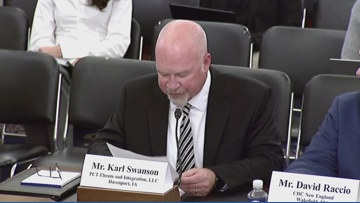Report on the Role of Play in Primary Education
Introduction and Background
Play is a universally acknowledged cornerstone of early childhood education in Australia, vital for fostering creativity, independence, and a fundamental understanding of the world. There is a strong consensus among educators and policymakers regarding the importance of play for children from birth to five years. However, this consensus dissipates as children transition into primary school. Despite growing research highlighting the benefits of play for school-aged children, its application as a pedagogical tool in primary education remains limited and inconsistent. A recent study of Australian primary teachers reveals significant confusion and conflicting views regarding the role and value of play within the formal learning environment.
Analysis of Teacher Perspectives and Practices
A survey of 238 Australian primary school teachers (Foundation to Year 6) was conducted to investigate their beliefs and practices concerning play.
Key Findings
- Contrasting Views on Developmental Benefits: While teachers overwhelmingly recognized the value of play for developing social (77%), emotional, and physical skills, there was marked uncertainty about its academic utility. Only 52% of teachers strongly agreed that students develop academic skills through play.
- Play vs. Learning Dichotomy: A significant portion of teachers (61%) perceive play as a “necessary break from learning,” indicating a view of play and learning as separate, rather than integrated, activities. This is further exemplified by statements suggesting school is exclusively for “learning” while play is an extracurricular activity.
- Conceptual Confusion: Teachers frequently used the terms “play” and “play-based learning” interchangeably, failing to distinguish between children’s natural, unstructured activity and the deliberate, teacher-guided use of play to achieve specific learning objectives.
- Implementation Barriers: A primary challenge cited by teachers is the perceived conflict between facilitating play-based experiences and the pressure to cover a dense, mandated curriculum within limited timeframes.
- Uncertainty in Pedagogy: There is a lack of consensus on the teacher’s role during play, with varied approaches ranging from non-interfering supervision to active, structured involvement. This confusion points to a need for clearer guidance on best practices.
Integrating Play-Based Pedagogy to Advance Sustainable Development Goals
The effective integration of play-based learning in primary schools presents a significant opportunity to advance several key United Nations Sustainable Development Goals (SDGs). This approach moves beyond academic achievement to foster holistic development essential for a sustainable future.
SDG 4: Quality Education
Play-based learning is a direct enabler of inclusive and equitable quality education and lifelong learning opportunities for all.
- It directly supports Target 4.1 by enhancing the quality and equity of primary education through engaging and effective pedagogical methods.
- It fosters the skills outlined in Target 4.7, including critical thinking, problem-solving, and collaboration, which are necessary for promoting sustainable development.
- By improving attention, memory, and planning skills, play underpins foundational literacy and numeracy, contributing to improved learning outcomes.
- It promotes a lifelong love of learning by making education enjoyable and relevant.
SDG 3: Good Health and Well-being
Play is fundamental to ensuring healthy lives and promoting well-being for all at all ages.
- It directly contributes to Target 3.4 by promoting positive mental health, building emotional intelligence, and developing resilience in children.
- Structured and unstructured play provides a necessary respite from academic pressures, reducing stress and fostering a positive and supportive school environment.
SDG 8 & 10: Decent Work, Economic Growth, and Reduced Inequalities
The skills cultivated through play are critical for building inclusive, productive societies.
- SDG 8 (Decent Work and Economic Growth): Play develops 21st-century skills such as creativity, innovation, and social intelligence, which are essential for the future workforce.
- SDG 10 (Reduced Inequalities): Play-based learning is an inherently inclusive methodology that can be adapted to diverse learning styles and abilities, ensuring that all children have the opportunity to participate and succeed, thereby reducing educational disparities.
Strategic Recommendations for Systemic Integration
To harness the full potential of play-based learning and align educational practices with SDG commitments, the following actions are recommended:
- Enhance Teacher Education: Pre-service teacher education programs must incorporate comprehensive training on the theory and practical application of play-based learning, equipping future educators with the skills to use play as an effective teaching tool across the curriculum.
- Implement Targeted Professional Development: Provide ongoing, high-quality professional development for current teachers. This training should focus on practical strategies for integrating play with curriculum requirements and demonstrating its role in achieving holistic student development and SDG-related competencies.
- Strengthen Policy Cohesion: Policymakers must work to create a more seamless and coherent pedagogical framework that bridges early childhood and primary education. Policy should explicitly recognize and endorse play-based learning as a vital methodology for achieving national education and well-being objectives.
SDGs Addressed in the Article
The article on the role of play in primary education touches upon several Sustainable Development Goals (SDGs), primarily focusing on education and well-being.
-
SDG 4: Quality Education
This is the most prominent SDG in the article. The entire discussion revolves around improving the quality of education by integrating play-based learning into primary school curricula. The article argues that play is not just a break from learning but a vital tool for it. It supports the development of critical thinking, problem-solving, literacy, and numeracy skills, which are all components of a quality education. The text highlights a “missed opportunity” in Australian primary schools where play is not effectively used, indicating a gap in educational quality.
-
SDG 3: Good Health and Well-being
The article connects play directly to children’s well-being. It states that play helps students develop “social skills” and supports “emotional” development. Furthermore, it cites research showing that regular play improves “emotional intelligence and resilience” even in young adults. By promoting these aspects of mental and social health, the integration of play into school life contributes to the overall well-being of students, which is a key component of SDG 3.
Specific SDG Targets Identified
Based on the article’s content, several specific targets under the identified SDGs can be pinpointed.
-
Target 4.1: Ensure that all girls and boys complete free, equitable and quality primary and secondary education leading to relevant and effective learning outcomes.
The article directly addresses this target by focusing on the quality and effectiveness of primary education. It suggests that play-based learning can lead to better learning outcomes, as it “can support literacy, numeracy and other academic goals, because it supports attention, memory and planning skills.” The confusion among teachers about play’s academic value (“only 52% strongly agreed students develop academic skills during play”) indicates a challenge in achieving uniformly effective learning outcomes.
-
Target 4.2: Ensure that all girls and boys have access to quality early childhood development, care and pre-primary education so that they are ready for primary education.
The article highlights a significant disconnect between early childhood education, where play is well-established, and primary school. It calls for “better alignment between the early education and primary years, to ensure play does not disappear at the school gate.” This directly relates to ensuring a continuum of quality development and education from pre-primary to primary levels, a core objective of Target 4.2.
-
Target 4.c: Substantially increase the supply of qualified teachers.
A central theme of the article is the need for better-equipped teachers. The study reveals “significant confusion about the role of play” among primary teachers. To solve this, the article recommends that “Teacher education programs should include training in practical ways to use play as a teaching tool” and that “Professional development should also help existing teachers.” This call to improve teacher skills and qualifications aligns perfectly with the goal of increasing the supply of qualified teachers who can implement best practices.
-
Target 3.4: Promote mental health and well-being.
The article supports this target by emphasizing the non-academic benefits of play. It notes that play is crucial for developing “social skills” and “emotional” well-being. The finding that play enhances “emotional intelligence and resilience” directly contributes to the promotion of mental health among children and young adults.
Implied Indicators for Measuring Progress
The article does not mention official SDG indicators, but it provides data and concepts that can serve as implied indicators to measure progress toward the identified targets.
-
Indicator for Teacher Qualification and Beliefs (Target 4.c & 4.1)
The percentage of teachers who believe in the academic value of play. The article provides a baseline: “only 52% strongly agreed students develop academic skills during play.” An increase in this percentage would indicate progress in changing teacher mindsets, a prerequisite for implementing play-based learning.
-
Indicator for Curriculum Integration (Target 4.1)
The percentage of classroom time dedicated to structured, play-based learning activities. The article implies this is currently low, with teachers feeling they have “limited time to cover such a huge curriculum.” Tracking the integration of play into lesson plans would be a direct measure of progress.
-
Indicator for Teacher Training (Target 4.c)
The number of teacher education programs and professional development courses that include modules on play-based learning. The article’s recommendation to create these programs implies their current scarcity. Measuring their availability and teacher participation would be a clear indicator of progress.
-
Indicator for Student Well-being (Target 3.4)
Measures of student social and emotional skills. The article states that “More than three-quarters (77%) strongly agreed students develop social skills through play.” Progress could be tracked through school-based surveys or assessments measuring students’ emotional intelligence, resilience, and social competencies.
Summary of SDGs, Targets, and Indicators
| SDGs | Targets | Indicators (Mentioned or Implied in the Article) |
|---|---|---|
| SDG 4: Quality Education |
Target 4.1: Ensure quality primary education with effective learning outcomes.
Target 4.2: Ensure quality early childhood development and a smooth transition to primary education. Target 4.c: Increase the supply of qualified teachers. |
– Percentage of teachers who believe play supports academic skills (Baseline: 52%). – Student engagement and enjoyment levels in studies. – Alignment of curriculum and teaching methods between early childhood and primary school. – Availability and uptake of teacher education and professional development programs on play-based learning. |
| SDG 3: Good Health and Well-being | Target 3.4: Promote mental health and well-being. |
– Percentage of teachers who believe play supports social and emotional development (Baseline: over 77%). – Measured improvements in students’ emotional intelligence and resilience. – Student self-reported levels of well-being at school. |
Source: theconversation.com







